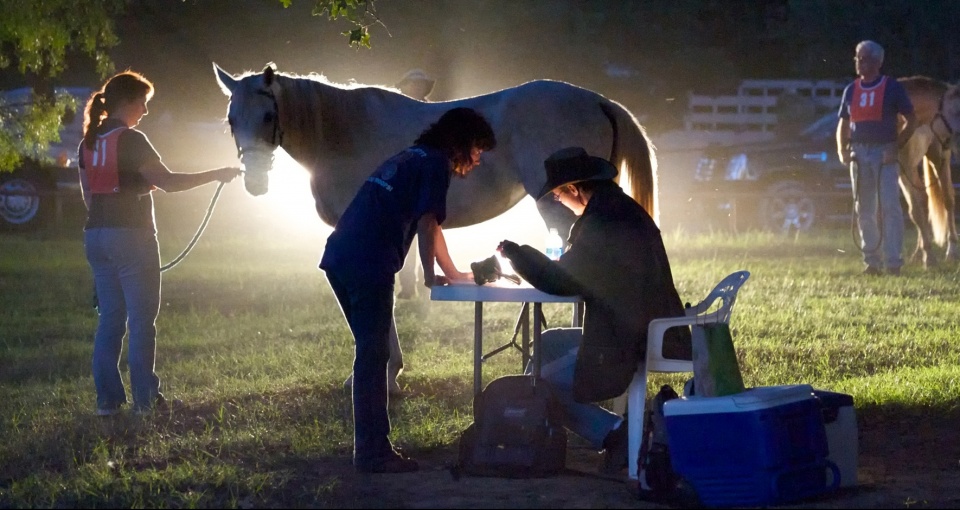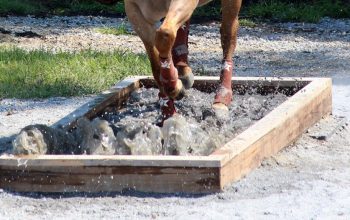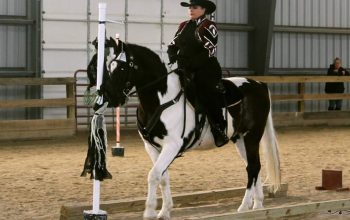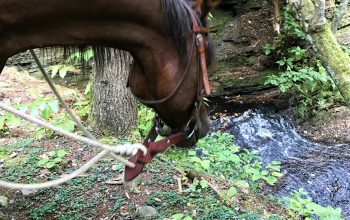WHAT IS CTR?
CTR is a distance sport competition over a measured trail that is completed within a window of time. It is a great family activity because it is open to all ages of riders and equine breeds.
By Bev Roberts
You bet! While most of us think of it in terms of military engagements, strategy goes by other names like blueprint, game plan (football comes to mind with all those x’s, o’s and arrows on a blackboard), road map, plan. It is the art of devising a means to an end (goal) with a favorable outcome.
In competitive trail riding (CTR), goals may range from completing the distance to winning, and anything in between, and doing it with the least stress and most enjoyment. Although the strategies discussed here are primarily for Open, Competitive Pleasure, and Novice divisions in two-day rides, Leisure division participants may find these strategies helpful, too. By NATRC design, the Leisure division competitor can arrive, compete, and go home the same day.
There are strategies for home, in camp, on the trail, and after coming off the trail. This article addresses the first of these.
Strategy starts at home. The key to any successful endeavor is preparation and a key activity at home is packing for you and your horse. A checklist makes packing soooo… much easier. It should include horse supplies, feed, spares, repair materials, food, personal items, trail gear, clothing, camping gear, and so on. You can develop your own list from scratch or download a list from NATRC’s website (natrc.org, do a search for “What to Pack”) and modify it to suit your needs. At least one rider even has her horse on her list! No forgetting that “key” member of the team.
When to leave home is a strategic factor in reducing stress and fatigue. Much of that depends on time and money (which is no surprise). Ideally, being a retired, monetarily rich person would easily answer the question of when to leave home – at one’s leisure, of course. This “ideal” person could even attend rides that are far away (more than a one-day drive) and could arrive at the ride camp at least two days before ride start. For a Saturday morning start, they could arrive on Thursday.
Arriving early leaves plenty of time to set up camp comfortably and to shake off the weariness of travel. Activities on Friday usually begin at 2:00 p.m. with the preliminary vet check. Most “normal” people do not have the “ideal” person’s luxuries and must juggle time off from work, money, and home responsibilities to arrive early enough on Friday in order to get their horses checked in by early evening.
NATRC does allow for those who know they will arrive after dark on Friday, or who have encountered delays in route, to check in very early on Saturday morning before the ride start. Give ride management advance notice.
Another strategy, if ride camp is at a location that takes reservations, reserve early. There will be more choices. Look for sites that are close to a pavilion where management holds meals and the ride briefing, close to the probable vet check location, close to a bathhouse and in the shade. Easy access to all those amenities makes the camping more enjoyable and less stressful after a long day on the trail.
Finally, work out what tack you will use for competing while you are conditioning your horse at home. Then, if you or your horse get rubs, sores or painful areas, you can fix the cause. At the ride, you will not be fretting about tack issues. Less stress, more enjoyment.
A thorough, detailed checklist makes it easy to pack in segments over a few days. No worrying whether or not that certain items were packed, just consult the list and move on with confidence. Below is a partial list:

Since 1961, we’ve helped riders of all ages learn the sport of competitive trail riding. Alongside other equine enthusiasts, you can deepen the relationship with your horse while learning new skills and setting your own competitive goals. There’s no place better to do this than on the open trail.
NATRC welcomes riders of any equine breed, including grade, and from any discipline.




